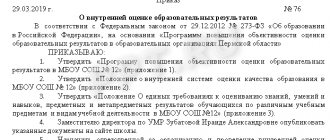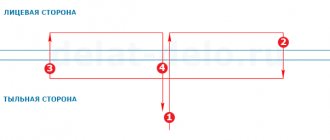Commentary to paragraph 1 of Art. 9
The general requirement for registration of all facts of economic life with primary accounting documents seems obvious. The difference from a similar requirement contained in the previous Accounting Law is that the primary documents will no longer be called supporting documents, and also in the fact that it is not business transactions that are subject to registration, but the facts of economic life.
In our opinion, this definition does not seem entirely correct, since at the level of terminology (used by the new Law on Accounting) the facts of economic life and the objects of accounting are not identical concepts.
Commentary to paragraph 2 of Art. 9
Clause 2 of Art. 9 of the commented Law contains a list of mandatory details that the primary accounting document must contain. In accordance with a similar rule contained in paragraph 2 of Art. 9 of the previous Law on Accounting, a list of mandatory details was established for documents whose form is not provided for in the albums of unified forms of primary accounting documentation.
On the one hand, since 2013, the use of unified forms is not mandatory. Therefore, the corresponding clause in the text of the norm of paragraph 2 of Art. 9 of the Accounting Law has not been reproduced. On the other hand, the list of mandatory details now applies to any form of accounting documentation used by an organization (economic entity).
All basic mandatory details have been saved. However, there are some peculiarities.
Firstly, the previous name of the requisite “measurements of a business transaction in physical and monetary terms” has actually been deciphered - it refers to the quantity in physical measurement, the unit of measurement and the amount of valuation of the corresponding asset or liability.
Secondly, in accordance with the general change in terminology, the concept of a fact of economic activity (instead of a business transaction) is used in the name of the details.
Finally, thirdly, in our opinion, the most significant change is that primary documents can now be signed not only by persons responsible for the correctness of its execution, but also by persons responsible for the completion (correct execution) of a transaction or event.
Article 9 “Primary accounting documents”: latest changes
Art. 9 Federal Law 402 on primary documents includes 8 paragraphs. Changes for 2021 affected paragraphs 1, 2, 3, 4 of the article.
- Clause 1 of Article 9 402 of the Federal Law states that primary documentation through which non-existent facts are recorded that are part of imaginary and feigned contracts is not accepted for accounting. The definition of feigned and imaginary contracts is indicated in the second paragraph of the article;
- Clause 2 of Article 9 402 of the Federal Law specifies the concept of imaginary and feigned transactions. These are non-existent facts, objects, expenses and income, responsibilities entered into accounting not based on the fact of action. Drawing up documentation based on false data is punishable by administrative and criminal liability;
A sham accounting object is an object that replaces another subject of a transaction in documents to cover up sham contracts. The list of imaginary objects does not include reserve funds specified in the law of the Russian Federation and expenses for their formation. In other words, paragraph 2 of Article 9 states that it is unlawful to enter unregistered transactions of an economic and financial nature into the accounting documentation, as well as making entries into accounting on the basis of false documentation;
- In paragraph 3 of Article 9 402 of the Federal Law, an addition was made that a citizen drawing up a certificate of economic life is obliged to timely submit the primary accounting documentation for recording the information entered in them in the accounting register authorities. The citizen is also responsible for the authenticity of the information entered. Persons who conduct accounting or who have signed a contract for accounting are not responsible by law for the authenticity of the information included in the documentation, entered in accordance with information from business life certificates. In other words, if the information in the primary accounting documents does not correspond to reality, the accountants do not bear responsibility for this; it lies with the compiler of the documentation. Therefore, the compiler is obliged to transmit the source documents on time and with reliable information;
- to clause 4 of Article 9 402 of the Federal Law . According to the amendments made in December 2013, the type of primary accounting documentation is selected by the head of the economic representative office, based on the report of the person who conducts the accounting. The type of primary documentation for state-owned enterprises is regulated by the law on the budget of the Russian Federation;
- Clause 5 establishes that primary documentation must be maintained on paper or electronic media, with a personal or electronic signature;
- Clause 6 establishes that if primary documents must be handed over to third parties, or to government agencies in paper form. The economic agent is obliged to make copies of papers at his own expense;
- Clause 7 establishes the allowance for adjustments in primary accounting documentation, unless otherwise specified in the law. Information about the date of editing is entered, with the signature and identification information of the responsible persons who compiled the document;
- Paragraph 8 regulates that when documentation on paper or electronic media is seized, copies of acts are included in the accounting documentation.
This is interesting: Minor harm to health what article
Clauses 5, 6, 7 and 8 remain unchanged and are valid in accordance with the previous editions of 2013.
Mandatory details of primary documents under Federal Law 402
The list of mandatory information on primary accounting acts is established in paragraph 2 of Art. 9. The following details must be provided without fail:
- Title of the act;
- Date and year of writing;
- Name of the compiler company;
- Composition of the fact of economic activity;
- Monetary or natural equivalent of the measurement value of the fact of economic activity (units of measurement must be indicated);
- The position of the employee who concluded the contract, carried out the operation, and the persons responsible for processing the transaction;
- Personal signature of the persons responsible for the execution and execution of the agreement and transactions, as well as initials or identification information.
Download Federal Law 402
Workers in the economic sphere, as well as managers preparing primary documentation, and persons involved in accounting, need to study the amendments to F3-402, which came into force in 2021.
You can download Federal Law 402 “On Accounting” using the link.
Commentary to paragraph 4 of Art. 9
The rule in paragraph 4 is not fundamentally new. The head of the organization previously had the right (or was obliged) to approve the forms of primary accounting documentation. The difference is that previously this only applied to those forms that were not unified. Since 2013, the head of an economic entity is obliged to approve exclusively all forms used in the organization.
Please note that sample forms must be submitted for approval by the person responsible for accounting. Thus, in the case when accounting responsibilities are transferred to a third party (under the terms of an outsourcing agreement or similar), the specialist with whom the corresponding agreement was concluded must submit the document forms.
In public sector organizations (to which clause 4 of Article 9 of the Accounting Law does not apply), the procedure for using forms of primary accounting documents is regulated by separate norms of the Instructions for the Application of the Unified Chart of Accounts, approved by Order of the Ministry of Finance of Russia dated December 1, 2010 N 157n, as well as Order of the Ministry of Finance of Russia dated December 15, 2010 N 173n “On approval of forms of primary accounting documents and accounting registers used by public authorities (state bodies), local governments, management bodies of state extra-budgetary funds, state academies of sciences, state (municipal) institutions and Guidelines for their use."
At the same time, as follows from the List of unified forms of primary accounting documents used by public authorities (state bodies), local governments, management bodies of state extra-budgetary funds, state academies of sciences, state (municipal) institutions (Appendix 1 to the Order of the Ministry of Finance of Russia dated 15.12 .2010 N 173n), public sector organizations can use forms of primary accounting documents for public authorities (state bodies), local governments, management bodies of state extra-budgetary funds, state academies of sciences, state (municipal) institutions (class 05 “Unified accounting system financial, accounting and reporting documentation of the public administration sector" OKUD), as well as forms of documents of class 03 "Unified system of primary accounting documentation" OKUD (that is, those that were previously used by business entities in other industries and types of activities). Thus, albums of unified forms of primary accounting documentation can continue to be used in the practice of document flow between economic entities, albeit on a limited scale.
Forms of primary accounting documentation
You may be interested in: Sberbank rebranding: essence, directions, costs
Registration of accounting documents in accounting is, first of all, the use of unified and independently developed forms. The use of many unified ones is not mandatory since 2013.
All primary forms must be approved by the head of the organization. The following are currently required:
A standard form is also provided for payment orders. In the process of completing unified forms, filling out accounting documents, namely all provided columns (lines), is mandatory. If any information is missing, a dash must be placed in the corresponding column.
It is worth noting that the use of accounting documents, which are currently not mandatory, is still used in organizations. Taking into account the internal needs of the enterprise, these forms can be modified. They can be made more suitable and convenient for recording specific business actions. For example, you can refuse to use printing details and markings on the front and back sides.
Commentary to paragraph 5 of Art. 9
Fundamentally new in the norm of clause 5 of Art. 9 is a mention of electronic documents and electronic digital signatures.
As already noted, the currently valid Federal Law of January 10, 2002 N 1-FZ “On Electronic Digital Signature” loses force on July 1, 2013. Instead, after this date, the Federal Law of April 6, 2011 N 63- should come into force Federal Law “On Electronic Signature”.
Article 3 of the Federal Law of January 10, 2002 N 1-FZ introduced, in particular, the following basic concepts:
- electronic document - a document in which information is presented in electronic digital form;
- electronic digital signature - a detail of an electronic document intended to protect this electronic document from forgery, obtained as a result of cryptographic transformation of information using the private key of an electronic digital signature and allowing to identify the owner of the signature key certificate, as well as to establish the absence of distortion of information in the electronic document;
- private key of an electronic digital signature - a unique sequence of characters known to the owner of the signature key certificate and intended for creating an electronic digital signature in electronic documents using electronic digital signature tools;
- public key of an electronic digital signature - a unique sequence of characters corresponding to the private key of an electronic digital signature, available to any user of the information system and intended to confirm the authenticity of an electronic digital signature in an electronic document using electronic digital signature tools;
- signature key certificate - a paper document or an electronic document with an electronic digital signature of an authorized person of the certification center, which includes the public key of the electronic digital signature and which is issued by the certification center to a participant in the information system to confirm the authenticity of the electronic digital signature and identify the owner of the signature key certificate.
When using public signature keys, additional costs associated with the use of digital signatures are usually minimal, and additional measures to ensure the safety of the signature key certificate are not required. However, in practice, when making commercial payments, calculations related to the receipt of budget funds, submission of accounting and other reports, it seems most appropriate to use a private key.
The conditions for recognition of digital signatures are established by the norms of Art. 4 of the Federal Law of January 10, 2002 N 1-FZ.
An electronic digital signature in an electronic document is equivalent to a handwritten signature in a paper document, subject to the following conditions:
- the signature key certificate related to this electronic digital signature has not lost force (is valid) at the time of verification or at the time of signing the electronic document if there is evidence determining the moment of signing;
- the authenticity of the electronic digital signature in the electronic document is confirmed;
- The electronic digital signature is used in accordance with the information specified in the signature key certificate.
Features of the use of electronic digital signatures in the field of public administration are established by Art. 16 of the Federal Law of January 10, 2002 N 1-FZ.
Federal Law No. 63-FZ dated April 6, 2011, which is due to come into force on July 1, 2013, significantly changes the terminology. In particular, the concepts of unqualified and qualified electronic signatures were introduced, and the procedure for obtaining key certificates and organizing interaction between organizations using electronic signatures and certification centers was clarified.
Article 19 of the Federal Law dated 04/06/2011 N 63-FZ specifically stipulates that signature key certificates issued in accordance with the Federal Law dated 01/10/2002 N 1-FZ “On Electronic Digital Signature” are recognized as qualified certificates in accordance with this Federal Law .
An electronic document signed with an electronic digital signature before July 1, 2012 is recognized as an electronic document signed with a qualified electronic signature in accordance with Federal Law dated April 6, 2011 N 63-FZ.
Commentary to paragraph 6 of Art. 9
This norm is not fundamentally new. A similar requirement was contained in paragraph 7 of Art. 9 of the former Accounting Law. The differences from the new norm seem to be purely terminological.
Please note that in paragraph 6 of Art. 9 of the new Accounting Law deals specifically with primary accounting documents (and not with reporting). Thus, most often the need to duplicate data from an electronic document on paper will arise due to a commercial agreement (with suppliers and contractors, with buyers and customers, etc.). Such documents, in particular, can be settlement documents, as well as documents that mediate the movement of inventories (for example, invoices). It can also be assumed that at present such contractual requirements will be typical for the conditions relating to the submission of invoices (for VAT amounts). Invoices can now also be submitted electronically, but this practice is not yet widespread.
Preparation of documentation in accounting
It is important to consider special cases that often occur when preparing documentation.
Refusal to use stamps. The main purpose of the seal is to certify the signature put by the responsible person. Since 2015, enterprises are not required to affix a seal. Information about the seal must be reflected in the organization's Charter (82-FZ). Stamping is required only in cases established by federal regulations.
It must be present on the following documents: double warehouse receipts, reports of accidents at work, documents submitted to customs authorities, a power of attorney allowing to represent the interests of a legal entity in the courts.
A seal is not a mandatory requisite, but its presence may be provided for in the form of the primary accounting document, which is approved by the head of the business entity.
Documents written in a foreign language. Documents can only be accepted for registration in Russian. If the document is drawn up in another language, then there must be a translation into Russian, and it must be line by line. Certification of the translation is not required except in cases stipulated by the Hague Convention:
402-FZ allows the execution of primary documents by business entities not only in paper, but also in electronic form.
The electronic document must contain all the mandatory details established for accounting documents, as well as an electronic signature.
Electronic signatures come in three varieties: simple, enhanced unqualified, and enhanced qualified. According to the Ministry of Finance, any of these three signatures can be used.
Commentary to paragraph 7 of Art. 9
The differences between the norm of the new Accounting Law regulating the procedure for making corrections in primary accounting documents and the previously valid one can also be considered significant.
First, the procedure for making corrections has been clarified. Previously, corrections to primary accounting documents could only be made in agreement with participants in business transactions, which must be confirmed by the signatures of the same persons who signed the documents, indicating the date of the corrections. However, it remained unclear how this agreement was to be formalized. Now, in fact, it has been established that to confirm the consent of the interested parties, their signature (and decryption of the signature) is sufficient. That is, for example, if it is necessary to make corrections to the expense report, the corrections must be confirmed not only by the person who actually made them (the accountant), but also by the accountable person. Corrections in bilateral acts (for example, when formalizing the acceptance of work performed or services provided) must be confirmed by representatives of both parties who signed the document, etc.
One more detail should be noted. The norm of paragraph 5 of Art. 9 of the previous Accounting Law directly prohibited making corrections to cash and banking documents. In the new Accounting Law, this provision is actually expanded. At the same time, the amended norm obliges the accountant to know for sure that making corrections to a particular primary accounting document is not prohibited.
Currently, according to our data, there is one explicitly formulated ban on making changes: in accordance with clause 2.1 of the Regulations on the procedure for conducting cash transactions with banknotes and coins of the Bank of Russia on the territory of the Russian Federation, approved by Order of the Bank of Russia dated October 12, 2011 N 373 -P, it is not allowed to make corrections to cash documents.
Making corrections to banking documents (prepared by organizations providing cash settlement services) will most likely be impossible in fact - a representative of a credit institution will simply not accept documents with corrections for execution.
Storage and destruction of accounting documents
You may be interested in: How long is a 2-NDFL certificate valid for a loan: validity period, procedure for obtaining
The procedure for storing primary products is determined by 558-P of the Ministry of Culture. The general storage period for documentation, in accordance with 402-FZ “On Accounting”, Article 9, is 5 years. The head of the enterprise is responsible for organizing the storage of documentation.
Some documents must be kept for a longer period:
If internal records have expired, they can be destroyed. The decision on the possibility of destruction must be made by an expert commission, created every year or operating permanently. Based on the results of the activities of such a commission, an act must be drawn up, which reflects the list of documents to be destroyed.
An enterprise can liquidate documentation on its own or by transferring it to a specialized organization for this purpose.










